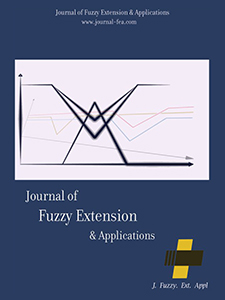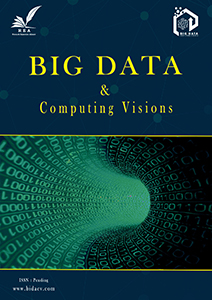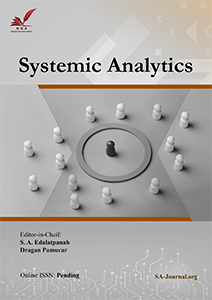Management Strategies in English Teaching Methodologies- A Bibliometric Analysis of Communicative Language Teaching
Keywords:
English teaching methods, Communicative language teaching, Bibliometric analysis, VOSviewerAbstract
In the contemporary era of globalization, the significance of the English language has become paramount, necessitating a heightened focus on English education and the refinement of teaching methodologies for enhanced efficiency. This study employs the bibliometric tool VOSviewer to analyze 8,863 and 484 publications about "English Teaching Method" and "Communicative Language Teaching", respectively, spanning the past 50 years. Leveraging extensive literature data from the Scopus database, the researcher first provides a comprehensive overview of the keywords' contextual landscape. The subsequent categorization includes (1) publishing countries, (2) publishing authors, (3) publication keyword ranking, and (4) the top ten and top five cited related literature. Finally, the researcher presents conclusive findings and recommendations for future research endeavors in English Teaching Methodology. This paper contributes valuable insights into the evolving landscape of English language education, offering a foundation for further scholarly exploration.
References
[1] Spolsky, B. (2004). Language policy. Wiley online library. https://onlinelibrary.wiley.com/doi/pdf/10.1002/9781444315783#page=588
[2] Hymes, D., & others. (1972). On communicative competence. In Sociolinguistics (Vol. 269293, pp. 269–293). Red Globe Press London. https://doi.org/10.1007/978-1-349-25582-5
[3] Li, Z., & Song, M. (2007). The relationship between traditional english grammar teaching and communicative language teaching. Online submission, 4(1), 62–65. https://eric.ed.gov/?id=ED497485
[4] Li, Z., Akouatcha, H. G., Akram, U., & Anaba, O. A. (2021). Information and communication technology and organizational performance during covid-19 pandemic: the role of organizational commitment, growth mindset, and entrepreneurial orientation. Frontiers in psychology, 12. https://www.frontiersin.org/journals/psychology/articles/10.3389/fpsyg.2021.752193
[5] Zhang, J., Ding, Y., Yang, X., Zhong, J., Qiu, X., Zou, Z., … & Zheng, Y. (2022). COVID-19’s impacts on the scope, effectiveness, and interaction characteristics of online learning: a social network analysis. PLOS one, 17(8), 1–21. https://doi.org/10.1371/journal.pone.0273016
[6] Gardner, R. C. (1985). Social psychology and second language learning: the role of attitudes and motivation. Edward Arnold.
[7] Kim, L. E., & Asbury, K. (2020). ‘Like a rug had been pulled from under you’: the impact of COVID-19 on teachers in England during the first six weeks of the UK lockdown. British journal of educational psychology, 90(4), 1062–1083. https://bpspsychub.onlinelibrary.wiley.com/doi/abs/10.1111/bjep.12381
[8] Gao, L. X., & Zhang, L. J. (2020). Teacher learning in difficult times: examining foreign language teachers’ cognitions about online teaching to tide over COVID-19. Frontiers in psychology, 11, 1-14. https://www.frontiersin.org/articles/10.3389/fpsyg.2020.549653/full?utm_source=Email_to_authors_&utm_medium=Email&utm_content=T1_11.5e1_author&utm_campaign=Email_publication&field=&journalName=Frontiers_in_Psychology&id=549653
[9] Turan, Z., & Akdag-Cimen, B. (2020). Flipped classroom in english language teaching: a systematic review. Computer assisted language learning, 33(5–6), 590–606. https://doi.org/10.1080/09588221.2019.1584117
[10] Sun, Z., Anbarasan, M., & Praveen Kumar, D. (2021). Design of online intelligent English teaching platform based on artificial intelligence techniques. Computational intelligence, 37(3), 1166–1180. https://onlinelibrary.wiley.com/doi/abs/10.1111/coin.12351
[11] Vogt, P., van den Berghe, R., de Haas, M., Hoffman, L., Kanero, J., Mamus, E., … & Pandey, A. K. (2019). Second language tutoring using social robots: a large-scale study. 2019 14th acm/ieee international conference on human-robot interaction (HRI) (pp. 497–505). IEEE. DOI: 10.1109/HRI.2019.8673077
[12] Acquah, E. O., & Katz, H. T. (2020). Digital game-based L2 learning outcomes for primary through high-school students: a systematic literature review. Computers and education, 143, 103667. https://www.sciencedirect.com/science/article/pii/S0360131519302209
[13] Fang, F., & Liu, Y. (2020). Using all english is not always meaningful: stakeholders’ perspectives on the use of and attitudes towards translanguaging at a Chinese university. Lingua, 247, 102959. https://www.sciencedirect.com/science/article/pii/S0024384120301674
[14] González-Víllora, S., Evangelio, C., Sierra-Díaz, J., & Fernández-Río, J. (2018). Hybridizing pedagogical models: a systematic review. European physical education review, 25(4), 1056–1074. https://doi.org/10.1177/1356336X18797363
[15] Li, C., He, J., Yuan, C., Chen, B., & Sun, Z. (2019). The effects of blended learning on knowledge, skills, and satisfaction in nursing students: a meta-analysis. Nurse education today, 82, 51–57. https://www.sciencedirect.com/science/article/pii/S0260691719302874
[16] Ye, Z., Dun, A., Jiang, H., Nie, C., Zhao, S., Wang, T., & Zhai, J. (2020). The role of 3D printed models in the teaching of human anatomy: a systematic review and meta-analysis. BMC medical education, 20(1), 1–9. https://doi.org/10.1186/s12909-020-02242-x
[17] Hymes, D. (1972). Models of the interaction of language and social life. In Directions in sociolinguistics: the ethnography of communication (pp. 35–71). Rinehart and Winston.
[18] Trim, J. (2001). The work of the council of Europe in the field of modern languages. Council of europe: graz, austria.
[19] Wilkins, D. A. (1972). Linguistics in language teaching (Vol. 111). Edward Arnold London.
[20] Rose, K. R. (2005). On the effects of instruction in second language pragmatics. System, 33(3), 385–399. https://www.sciencedirect.com/science/article/pii/S0346251X05000370
[21] Leung, C. (2005). Convivial communication: recontextualizing communicative competence. International journal of applied linguistics, 15(2), 119–144. https://onlinelibrary.wiley.com/doi/abs/10.1111/j.1473-4192.2005.00084.x
[22] Bruton, A. (2011). Is CLIL so beneficial, or just selective? Re-evaluating some of the research. System, 39(4), 523–532. https://www.sciencedirect.com/science/article/pii/S0346251X1100100X
[23] Kessler, G. (2018). Technology and the future of language teaching. Foreign language annals, 51(1), 205–218. https://onlinelibrary.wiley.com/doi/abs/10.1111/flan.12318
[24] Norris, J. M. (2009). Language policy. In The handbook of language teaching (pp. 578–594). Wiley Online Library. https://onlinelibrary.wiley.com/doi/pdf/10.1002/9781444315783#page=588

 Metrics
Metrics



